
April 8, 2024 starting at approximately 12:14 p.m. in San Antonio
Within seven months, San Antonio will experience a rare marvel—two solar eclipses. A total solar eclipse occurs somewhere in the world about once every 18 months. However, it is rare for the same location to see two within such a short time span.
On October 14, 2023, we witnessed an annular eclipse. Then on April 8, 2024, we will see a total eclipse.
Since 1851, only four annular eclipses and two total eclipses have gone through parts of Texas—and it continues to be a rare occurrence. The next annular eclipse in Texas won’t happen until 2056. After the April 2024 total solar eclipse, the following occurrence won’t take place until 2045. Be sure to mark your calendars!
Eclipse map by NASA Scientific Visualization Studio.
Start time: 12:14 p.m. / Maximum: 1:34 p.m.
Total time of maximum: 4 minutes 25 seconds
End time: 2:55 p.m.
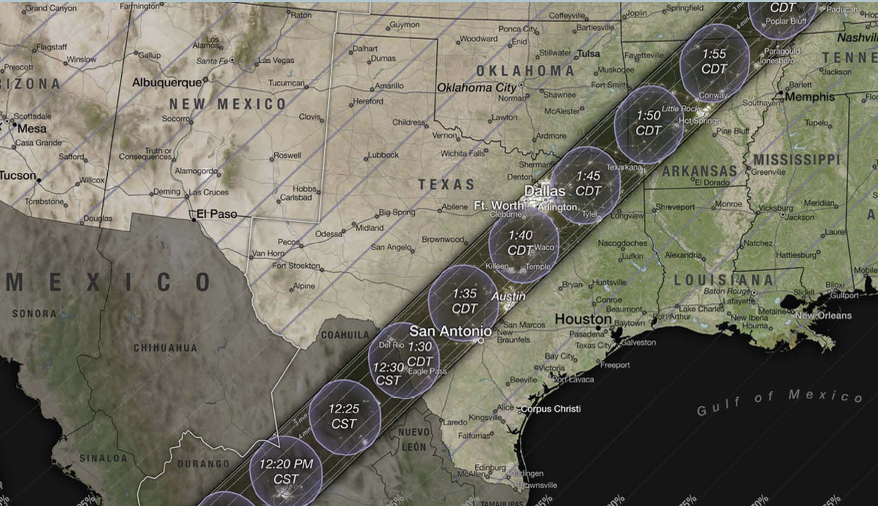
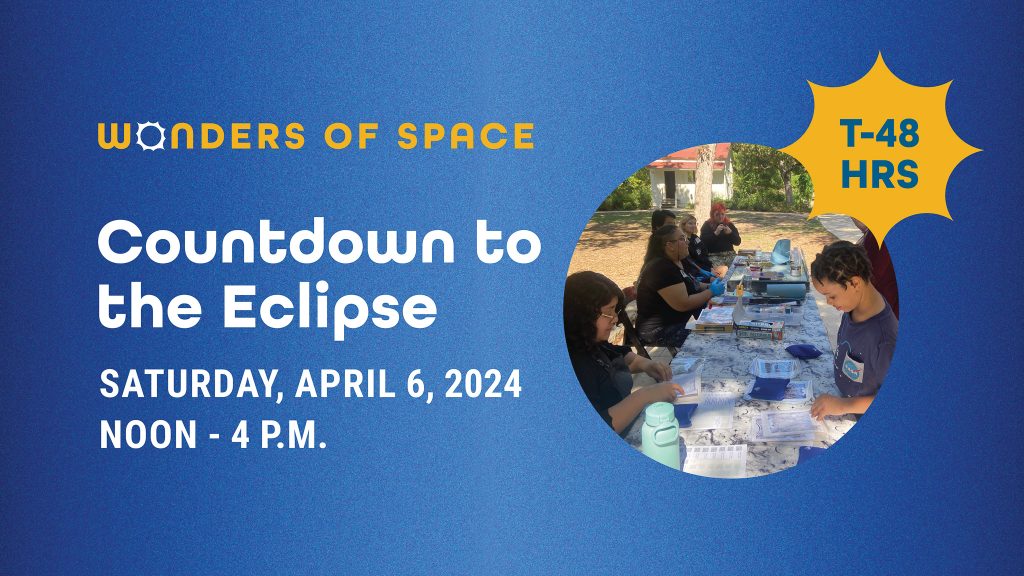
Join us for an afternoon of stellar hands-on activities and astronomical fun. See the Sun in a whole new light using solar telescopes. Explore the universe like a scientist using filtered light. And much more!
Cost: Free with Museum Admission.
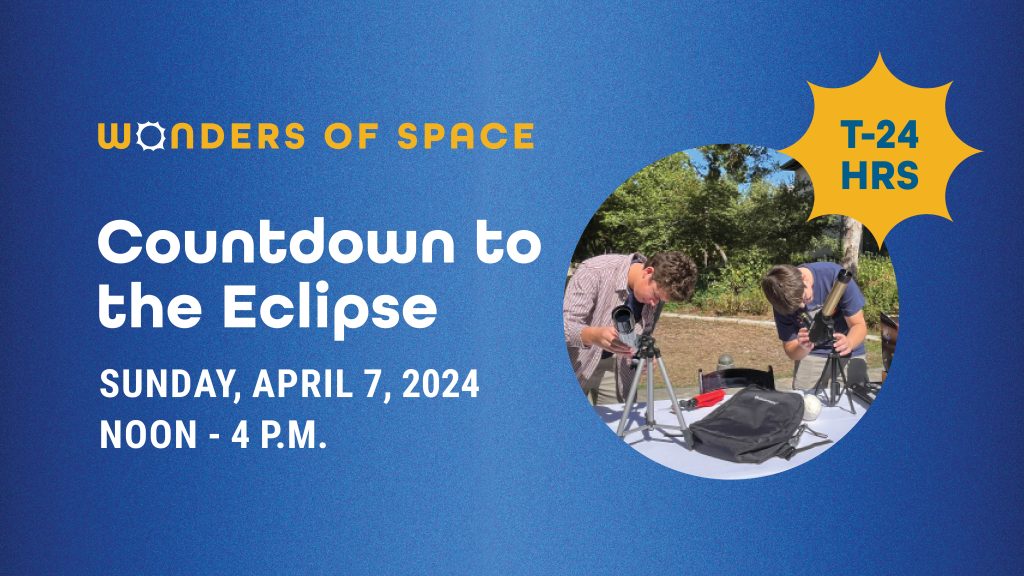
Learn how a solar eclipse happens by making your own Sun, Earth and Moon orbit model. Play hide-and-seek with the Moon to see what hidden shapes you can find! Join us for an astronomical afternoon of hands-on, family-friendly, eclipse-themed activities.
Cost: Free with Museum Admission.
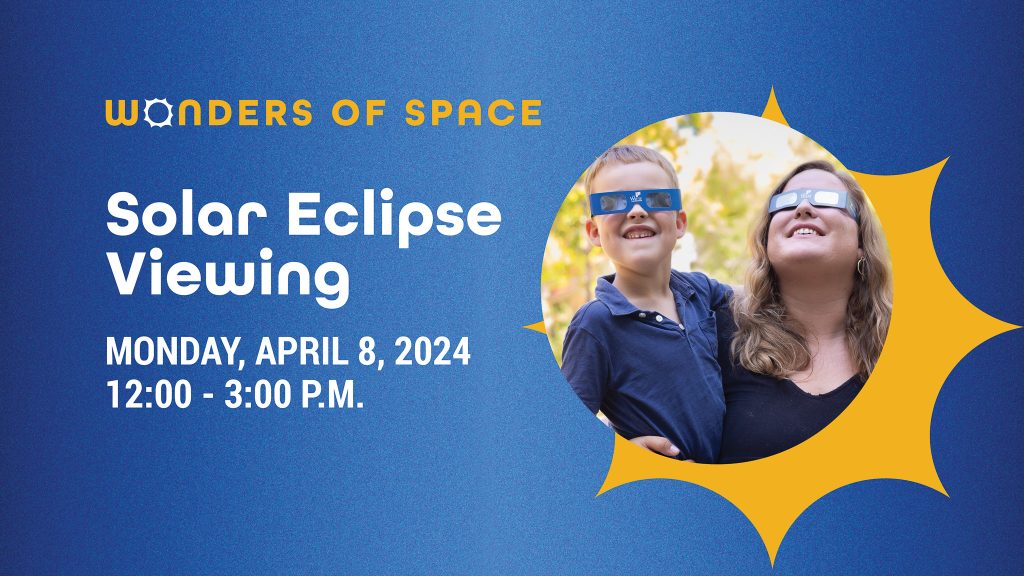
View the Solar Eclipse at the Witte Museum! Bring your friends and family to the Witte to get your certified eclipse glasses and watch this exciting event.
Cost: Free with Museum Admission.
The Witte Museum will be 0.04% away from totality and will be at 99.96% obscuration (concealment) during the eclipse maximum.
An eclipse occurs when one space object blocks our view of another.
A solar eclipse occurs when the Moon blocks the Sun’s light from reaching the Earth. As the Moon crosses between the sun and Earth, it casts a shadow on Earth.
An annular eclipse is a solar eclipse that occurs when the Moon is at its greatest distance from the Earth, called apogee. The Moon appears smaller to our eyes, and it is not able to block the entirety of the sun’s light. The result is a “ring of fire” in which the Sun’s light is visible around the edges of the Moon.

When the view of the Sun is completely blocked by the Moon, regions in the Moon’s shadow experience a total solar eclipse. Totality is a rare, one-of-a-kind experience that people travel the world to view.
Looking directly at the Sun can cause severe and permanent damage to your eyes. So how do we view an eclipse safely?
While the Moon slowly blocks the Sun, it is essential to wear certified solar eclipse glasses or use a special pinhole projector. Regular sunglasses, camera filters or other improvised methods are not safe for directly viewing the sun.
During a total eclipse, you can view it without eye protection only during time that the Sun is completely covered by the Moon and the sky is dark. After that, be sure to put your eclipse glasses back on!
Glasses meeting the ISO 12312-2 certification requirements are available for purchase at the Bolner Family Museum Store inside the Witte Museum, in-person or online.
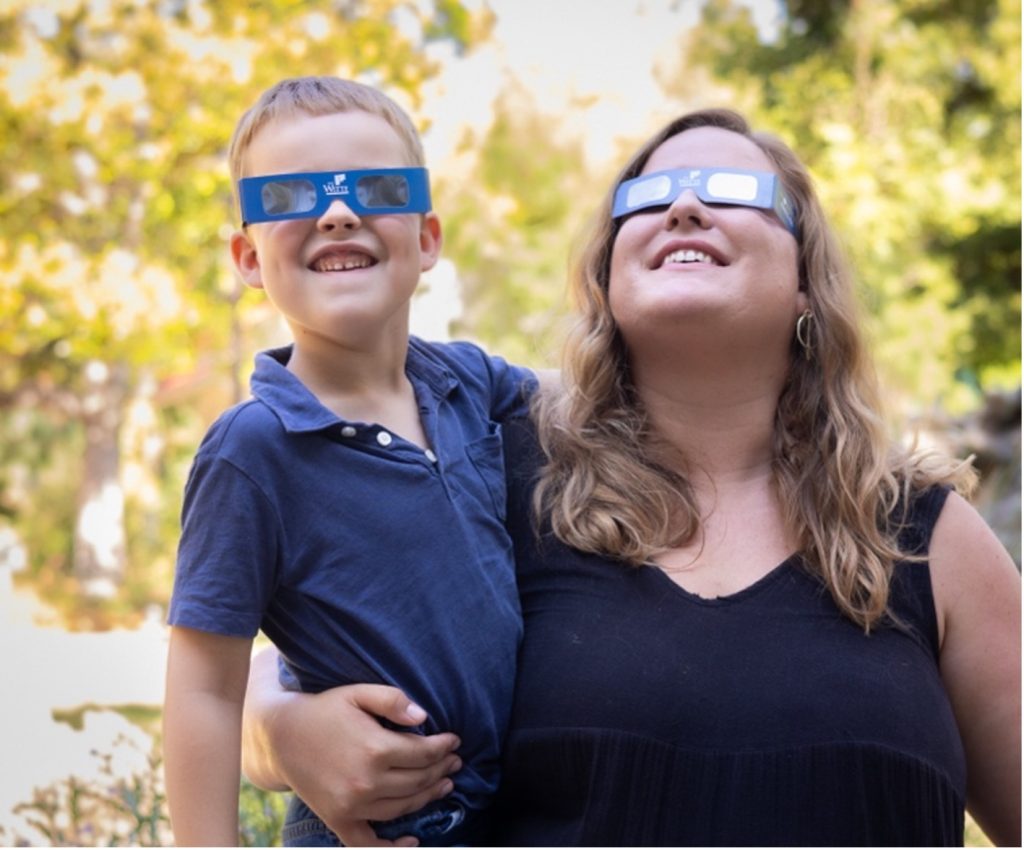
Click on a button below to view the San Antonio annular eclipse simulator from Eclipse2024.org.
Are you an educator looking for eclipse-related learning material? You can find educational resources from our STEM Ecosystem partners online.

This website created in partnership with the Alamo STEM Ecosystem, bridging youth, community and workforce.

Eclipse Outreach Programming is generously supported by the Simons Foundation. Promotional support is generously provided by KENS 5.
WITTE MUSEUM and all related brands are ® & ™ the Witte Museum.
© 2023 The Witte Museum, San Antonio, Texas
The Witte Museum
Nature, Science & Culture
3801 Broadway
San Antonio, Texas 78209
Phone: 210.357.1900
Contact the Witte Museum



